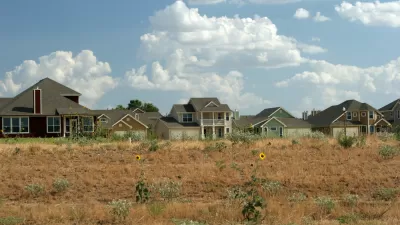This decade is likely to produce demographic news that will shock anyone born after 1850.

According to an article by Richard Fry, this decade will likely be the first since the one that began in 1850 to break this long-running trend of shrinking households. In 2010, the average U.S. household was 2.58. "In 2018 there were 2.63 people per household," writes Fry. All those figures are way down from the 5.79 people per household in 1790.
So why is American life making a shift that hasn't been witnessed since before slavery was abolished?
Households are increasing in size mathematically because the growth in the number of households is trailing population growth. The newly released data indicates that the population residing in households has grown 6% since 2010 (the smallest population growth since the 1930s), while the number of households has grown at a slower rate (4%, from 116.7 million in 2010 to 121.5 million in 2018).
According to Fry, the increasing size of households will have economic effects in the housing sector and in consumer goods like home appliances and home furnishings. "In general, it leads to a less vigorous housing sector – fewer apartment leases and home purchases, as well as less spending related to housing, such as cable company subscriptions and home accessories suppliers," according to Fry.
As for the demographic trends driving the growing American household, Fry focuses on two trends of note: a growing share of population living in multi-generational households and a growing share of Americans "doubling up" in shared living quarters.
FULL STORY: The number of people in the average U.S. household is going up for the first time in over 160 years

Planetizen Federal Action Tracker
A weekly monitor of how Trump’s orders and actions are impacting planners and planning in America.

San Francisco's School District Spent $105M To Build Affordable Housing for Teachers — And That's Just the Beginning
SFUSD joins a growing list of school districts using their land holdings to address housing affordability challenges faced by their own employees.

The Tiny, Adorable $7,000 Car Turning Japan Onto EVs
The single seat Mibot charges from a regular plug as quickly as an iPad, and is about half the price of an average EV.

Seattle's Plan for Adopting Driverless Cars
Equity, safety, accessibility and affordability are front of mind as the city prepares for robotaxis and other autonomous vehicles.

As Trump Phases Out FEMA, Is It Time to Flee the Floodplains?
With less federal funding available for disaster relief efforts, the need to relocate at-risk communities is more urgent than ever.

With Protected Lanes, 460% More People Commute by Bike
For those needing more ammo, more data proving what we already knew is here.
Urban Design for Planners 1: Software Tools
This six-course series explores essential urban design concepts using open source software and equips planners with the tools they need to participate fully in the urban design process.
Planning for Universal Design
Learn the tools for implementing Universal Design in planning regulations.
Smith Gee Studio
City of Charlotte
City of Camden Redevelopment Agency
City of Astoria
Transportation Research & Education Center (TREC) at Portland State University
US High Speed Rail Association
City of Camden Redevelopment Agency
Municipality of Princeton (NJ)




























